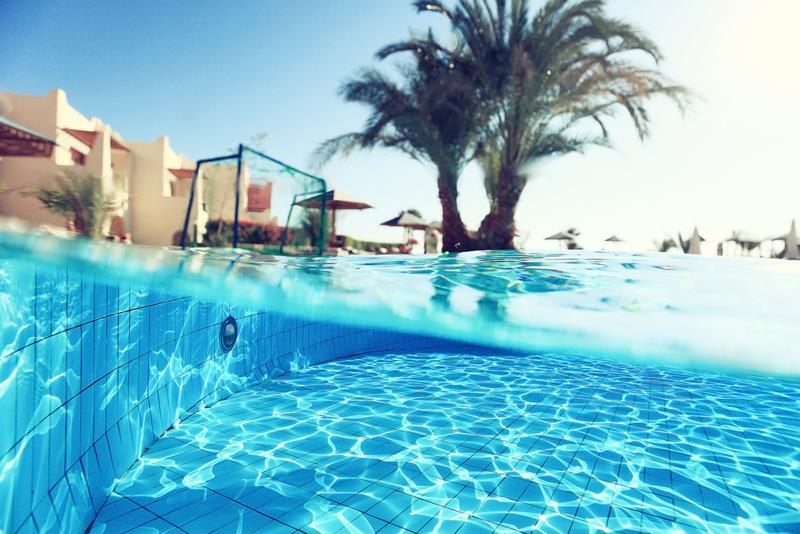Swimming pools offer sweet salvation from the sticky summer heat. Of course, these sparkling blue saviors require a lot of maintenance, and for good reason. Every year, thousands of Americans contract recreational water illnesses while swimming in contaminated pools, according to the Centers for Disease Control and Prevention.
Before organizing your next backyard bash, review these essential pool cleaning strategies:
Deal with debris
Most pool owners find floating debris to be an aesthetic blight and nothing more. Unfortunately, this simply isn't the case, as pool debris contaminates water with harmful bacteria. Fortunately, there's an easy fix to this common problem: skimming.
You've probably got a stock, hand-held pool skimmer that can do a decent job. But if you want to perform a more thorough cleaning, you can always modify your skimmer by stretching a pair of nylon stockings around its baskets, Trulia reported. This will enable you to scoop up smaller particles, including dirt, sand and stray human hair.
After you've collected all the debris you can, be sure to dispose of it far away from your pool – you don't want a sudden gust of wind undoing your work. Additionally, if you find yourself regularly skimming for leaves or other organic bits from nearby shrubbery, consider relocating those plants, This Old House suggested.

Pump and vacuum
Most in-ground pools come equipped with pumping and vacuum systems. The latter are especially effective for cleaning up submerged debris stuck to the pool bottom. To get started, connect your vacuum attachment to its accompanying hose, then submerge both. You want water to pour out of the free end of the hose. Finish up by attaching that end to one of your built-in pull skimmers.
When vacuuming, move across the bottom of the pool using long, parallel strokes. The entire process should take around 30 minutes.
Unlike vacuums, pool pumps do all the work on their own. However, they still require occasional maintenance. You should regularly clean your pump filter and monitor its performance. Even if your pump is up to par, you might consider swapping it for an energy efficient model. Your pool pump can account for as much as half of your total home energy consumption during the warmer months, NBC News reported. If you'd like to improve your home's overall energy efficiency, adopt a pump with less horsepower – a 0.75 horsepower model will work just fine, according to the Department of Energy. Additionally, switch out your current filter for a larger version that can catch more debris.
If you're weary of making drastic changes to your pool pump setup, you could always install a timer to facilitate more efficient cycling periods. Of course, keeping intakes clean and free of debris will also help, as your pump won't have to work overtime pushing pool water through clogged grates.
Consider water quality
Getting rid of visible contaminates is only half the battle – you must also address microscopic bacteria. Seemingly clean pools can contain harmful bugs, such as E.coli, or incubate and spread illnesses from sick pool goers. Chlorine is obviously the solution here, as the chemical kills bacteria and puts an end to algae.
Chlorine kills harmful bugs and puts an end to algae.
There are several methods for dispersing chlorine in pool water. However, most people opt for easy-to-use chlorine tablets, which are normally placed in built-in pull skimmer baskets. Once you've added the recommended dose, be sure to test your pool pH levels. Readings from 7.4 to 7.6 are ideal. If you get something out of this range, adjust your water by adding muriatic acid for pH readings above 7.6 or soda ash those under 7.4. Test your water a couple times a week to make sure you're in a good spot and maintaining a healthy aquatic environment. Your swimming companions will thank you.

